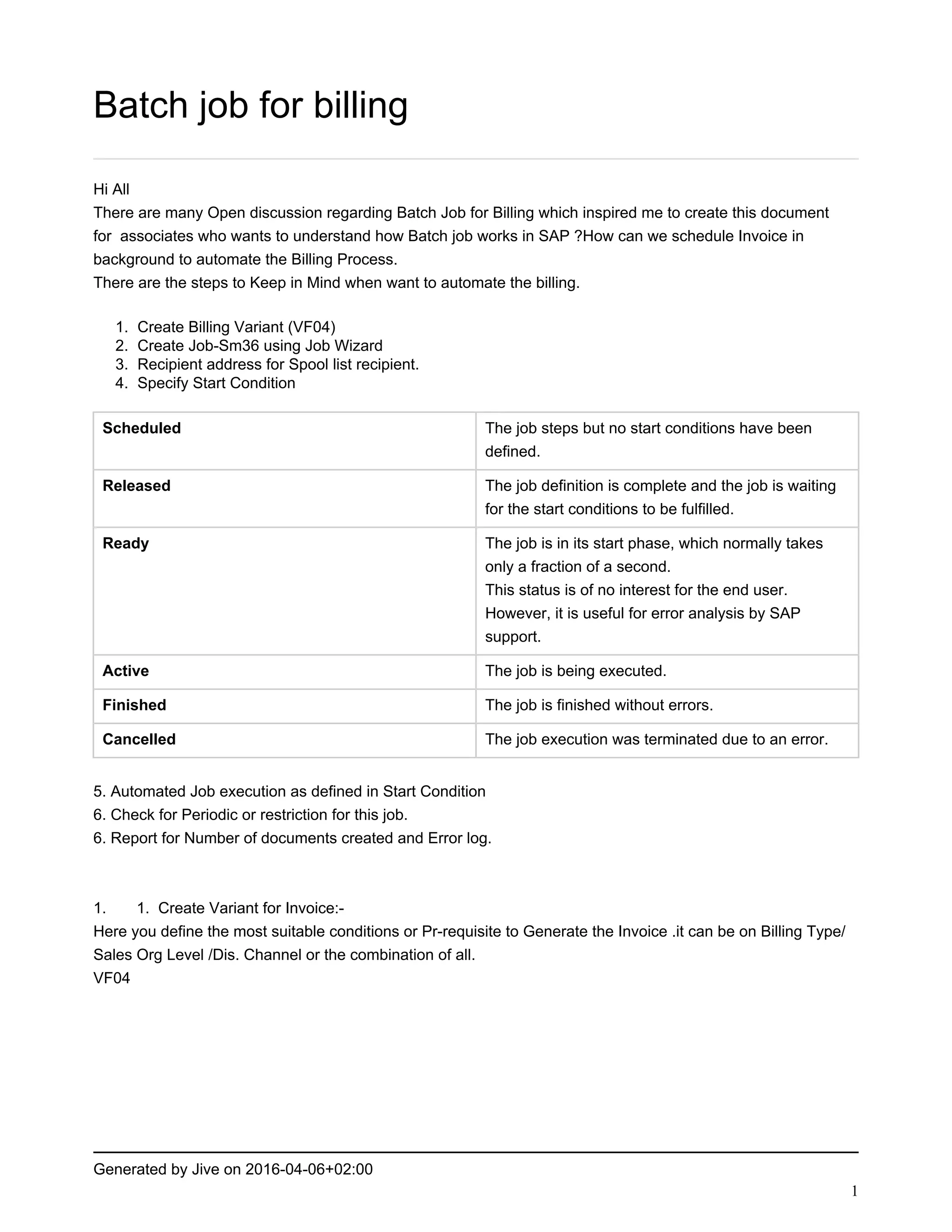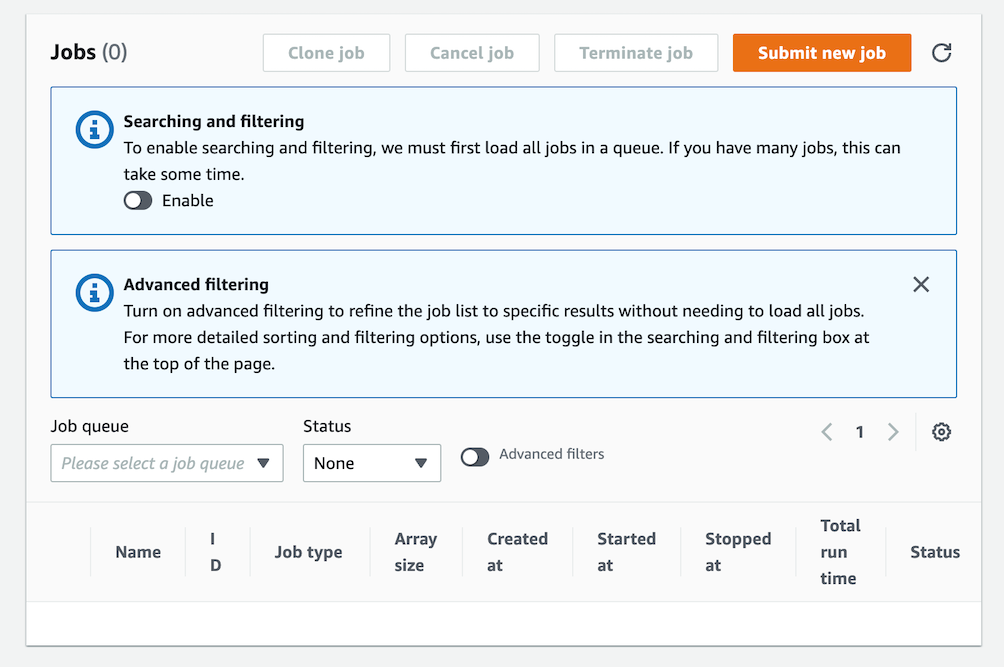Hey there, tech enthusiasts and coding wizards! If you're reading this, chances are you've stumbled upon the term "remoteiot batch job example" and are wondering what all the fuss is about. Well, buckle up because we're diving deep into the world of RemoteIoT and how batch jobs play a crucial role in modern data processing. remoteiot batch job example is more than just a buzzword; it's a game-changer for developers and businesses alike. So, let's get started, shall we?
Imagine a scenario where you need to process massive amounts of data collected from IoT devices scattered across the globe. How do you ensure that every byte of information is handled efficiently without overwhelming your system? That's where remoteiot batch job example comes in. In simple terms, it's like setting up a super-efficient assembly line for data, ensuring everything runs smoothly and on schedule.
Now, before we dive into the nitty-gritty, let's establish one thing: this isn't just another tech article. We're here to break it down for you in a way that's easy to digest, packed with actionable insights, and sprinkled with some good ol' developer humor. So, grab your favorite beverage, and let's explore the fascinating world of remoteiot batch job example together!
Read also:Chinese 1985 Animal Your Zodiac Guide To The Year Of The Ox
Before we move forward, here's a quick table of contents to help you navigate through this guide:
- What is RemoteIoT?
- Batch Job Basics
- Why RemoteIoT Batch Jobs?
- Setting Up a Batch Job
- Real-World Examples
- Tools and Technologies
- Common Challenges
- Optimizing Performance
- Future Trends
- Conclusion
What is RemoteIoT?
Alright, let's start with the basics. RemoteIoT, as the name suggests, refers to the Internet of Things (IoT) systems that operate remotely. These systems collect, process, and analyze data from IoT devices without requiring constant human intervention. Think of it as a virtual assistant for your IoT infrastructure, ensuring everything runs like clockwork.
Now, here's the kicker: RemoteIoT isn't just about collecting data. It's about making sense of that data and turning it into actionable insights. And that's where batch jobs come into play. By using remoteiot batch job example, you can automate repetitive tasks, process large datasets, and streamline your workflows. It's like having a personal data wizard working behind the scenes!
Batch Job Basics
Understanding Batch Processing
Batch processing is a method of handling large volumes of data in groups, rather than processing each piece of data individually. It's like cooking a big batch of pasta instead of boiling each noodle separately. Makes sense, right?
Batch jobs are particularly useful when dealing with tasks that don't require immediate results. For example, processing sensor data from IoT devices overnight or generating daily reports for stakeholders. By batching these tasks, you can save time, reduce resource consumption, and improve system performance.
Key Features of Batch Jobs
- Automation: Batch jobs can be scheduled to run automatically at specific intervals, freeing up your time for more important tasks.
- Scalability: Whether you're dealing with a few hundred records or millions of them, batch jobs can handle it all.
- Error Handling: Most batch processing systems come with built-in mechanisms to handle errors and retries, ensuring data integrity.
Why RemoteIoT Batch Jobs?
So, why should you care about remoteiot batch job example? Well, here's the deal: as IoT devices become more prevalent, the amount of data they generate is skyrocketing. Traditional methods of data processing simply can't keep up with the sheer volume and complexity of this data. That's where RemoteIoT batch jobs come in.
Read also:Fantasi Sotwe The Ultimate Guide To Exploring Your Creative Mind
By leveraging remoteiot batch job example, you can:
- Process data from remote locations without compromising on performance.
- Reduce latency and improve response times for critical applications.
- Ensure data consistency and accuracy across distributed systems.
Plus, with the rise of edge computing and cloud-based solutions, remoteiot batch job example is becoming an essential tool for modern developers. It's like having a Swiss Army knife for your IoT projects!
Setting Up a Batch Job
Step 1: Define Your Requirements
Before you dive into setting up a batch job, take a step back and define your requirements. Ask yourself:
- What data do I need to process?
- How often does this data need to be processed?
- What are the expected outcomes?
Having a clear understanding of your goals will help you design a batch job that meets your specific needs.
Step 2: Choose the Right Tools
There are several tools and technologies available for setting up batch jobs. Some popular options include:
- AWS Batch: A fully managed service for running batch computing workloads on AWS.
- Azure Batch: A cloud-based solution for running large-scale parallel and batch computing jobs.
- Apache Spark: An open-source framework for large-scale data processing.
Choose the tool that best aligns with your project requirements and technical expertise.
Real-World Examples
Let's take a look at some real-world examples of how remoteiot batch job example is being used in various industries:
Smart Agriculture
In the agriculture industry, IoT sensors are used to monitor soil moisture, temperature, and other environmental factors. By using remoteiot batch job example, farmers can process this data and make informed decisions about irrigation, fertilization, and pest control.
Healthcare
In healthcare, IoT devices are used to monitor patient health metrics such as heart rate, blood pressure, and glucose levels. RemoteIoT batch jobs can help process this data and generate alerts for healthcare providers when certain thresholds are exceeded.
Manufacturing
In manufacturing, IoT sensors are used to monitor equipment performance and predict maintenance needs. By leveraging remoteiot batch job example, manufacturers can reduce downtime and optimize production schedules.
Tools and Technologies
Here's a quick rundown of some of the tools and technologies you might encounter when working with remoteiot batch job example:
- Python: A popular programming language for data processing and automation.
- SQL: A powerful language for querying and manipulating databases.
- Docker: A platform for building, shipping, and running containerized applications.
- Kubernetes: An open-source system for automating deployment, scaling, and management of containerized applications.
Each of these tools has its own strengths and weaknesses, so it's important to choose the ones that best suit your project needs.
Common Challenges
While remoteiot batch job example offers numerous benefits, it's not without its challenges. Here are some common issues you might encounter:
- Data Security: Ensuring the security and privacy of sensitive data is a top priority.
- Scalability: As your data grows, you'll need to ensure your batch job can scale accordingly.
- Error Handling: Dealing with errors and retries can be tricky, but it's essential for maintaining data integrity.
By addressing these challenges early on, you can minimize disruptions and ensure smooth operations.
Optimizing Performance
Now that you know the basics, let's talk about how to optimize the performance of your remoteiot batch job example:
1. Use Efficient Algorithms
Choosing the right algorithms can make a huge difference in processing speed and resource consumption. Take the time to evaluate different algorithms and select the ones that best suit your needs.
2. Monitor Resource Usage
Keep an eye on your system's resource usage to identify bottlenecks and optimize performance. Tools like Prometheus and Grafana can help you visualize this data and make informed decisions.
3. Schedule Jobs Wisely
Timing is everything when it comes to batch jobs. Schedule your jobs during off-peak hours to minimize the impact on your system's performance.
Future Trends
As technology continues to evolve, so too will the world of remoteiot batch job example. Here are some trends to watch out for:
- AI and Machine Learning: These technologies are being integrated into batch processing systems to improve accuracy and efficiency.
- Edge Computing: By processing data closer to the source, edge computing can reduce latency and improve response times.
- Blockchain: This technology is being explored for securing IoT data and ensuring data integrity.
Stay ahead of the curve by keeping an eye on these trends and incorporating them into your projects where applicable.
Conclusion
And there you have it, folks! A comprehensive guide to remoteiot batch job example. From understanding the basics to exploring real-world examples and future trends, we've covered it all. Remember, remoteiot batch job example isn't just about processing data; it's about transforming that data into valuable insights that drive business success.
So, what are you waiting for? Dive into the world of remoteiot batch job example and start building smarter, more efficient IoT systems. And don't forget to share your thoughts and experiences in the comments below. Until next time, happy coding!


